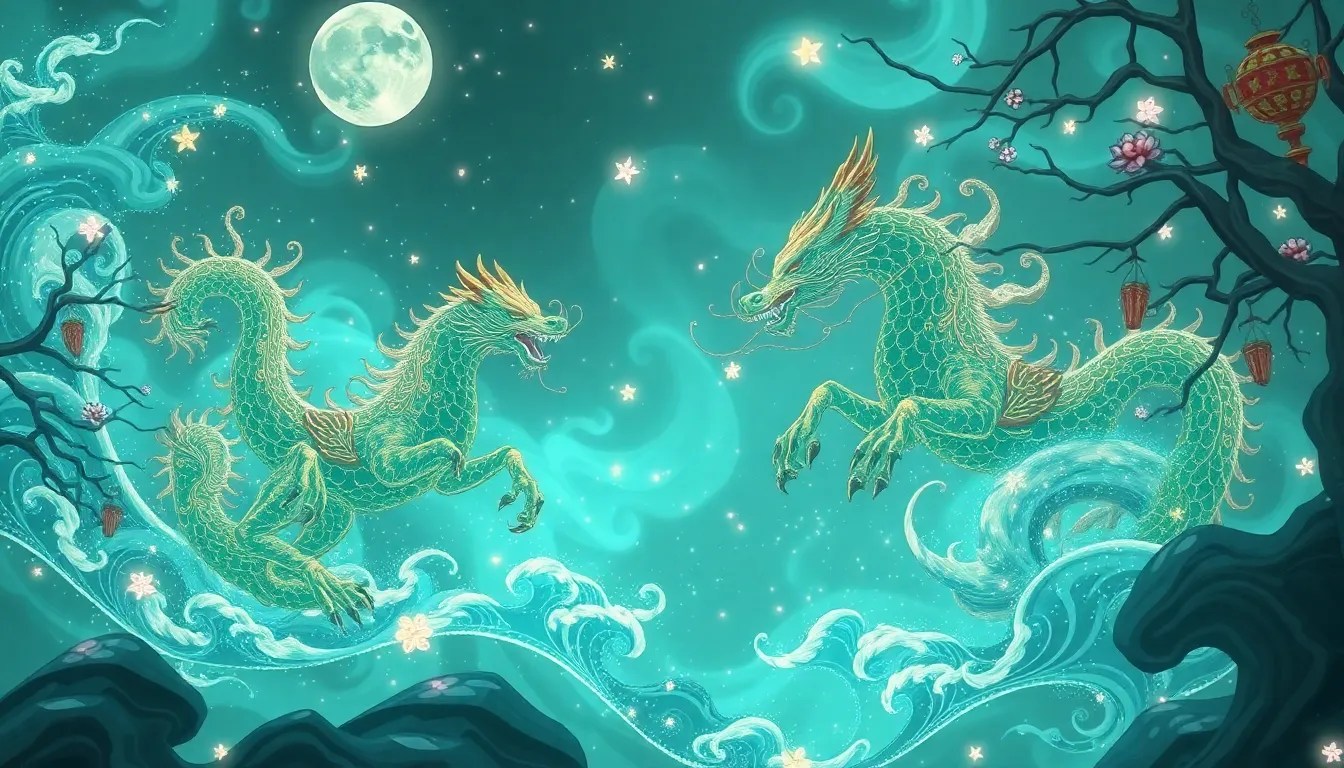The Enchanted Symbols of Immortality in Chinese Folktales
I. Introduction to Immortality in Chinese Mythology
Immortality holds a profound place in Chinese mythology, representing not just an endless existence, but a state of enlightenment and harmony with the universe. The idea of transcending the mortal coil has been a recurring theme in Chinese culture, deeply influencing philosophical thought, religious practices, and artistic expressions. Folktales serve as a vital medium through which these complex ideas about life, death, and eternity are conveyed, making the concept of immortality accessible and relatable to all.
II. The Origins of Immortality Myths
The roots of immortality myths in Chinese culture can be traced back to ancient texts such as the Dao De Jing and the Shan Hai Jing. These texts explore the nature of existence and the cosmos, often depicting deities and legendary figures who embody the quest for eternal life.
- Laozi: The legendary figure often associated with Daoism, Laozi represents harmony with the Dao, or the way of the universe, which is central to the pursuit of immortality.
- Shangdi: The supreme deity in ancient Chinese religion, Shangdi is often seen as a source of life and longevity.
III. The Eight Immortals: Icons of Eternal Life
The Eight Immortals, or Baxian, are among the most celebrated figures in Chinese mythology. Each immortal possesses unique powers and attributes, representing different aspects of life and the human experience. Their stories are rich with moral lessons and cultural significance.
- He Xiangu: The only female immortal, she embodies purity and beauty and is often depicted holding a lotus flower.
- Li Tieguai: Known for his rugged appearance, he symbolizes compassion and healing, often associated with a gourd filled with medicine.
- Zhang Guolao: Representing wisdom, he rides a white donkey and is often seen with a drum that can summon spirits.
- Cao Guojiu: A symbol of wealth and prosperity, he is often depicted holding a tablet and is known for his ability to grant wealth to devotees.
- Lü Dongbin: A central figure in Daoism, he represents the pursuit of enlightenment and is often associated with a sword to vanquish ignorance.
- Lan Caihe: The androgynous immortal symbolizes joy and freedom, often portrayed with flowers.
- Han Xiangzi: Known for his musical talents, he embodies the joy of life and creativity.
- Li Tieniu: A symbol of strength and resilience, he is often depicted with a hammer.
IV. Symbolism of the Peach of Immortality
One of the most iconic symbols of immortality in Chinese mythology is the Peach of Immortality, which grows in the Garden of the Queen Mother of the West, Xiwangmu. This mythical garden is said to bloom once every 3,000 years, producing peaches that grant eternal life to those who consume them.
- Mythology: According to the legend, the peaches are tended by celestial beings and are a central aspect of the Queen Mother’s feasts.
- Cultural Significance: The peaches represent not only immortality but also health and prosperity, making them a popular motif in Chinese art and literature.
V. The Role of the Dragon in Immortality
The dragon is an essential symbol in Chinese mythology, often associated with power, strength, and longevity. As a creature of both water and sky, the dragon embodies the harmony of nature and is often portrayed in tales of immortality.
- Folktales: Numerous folktales highlight the dragon’s connection to immortality, often depicting it as a guardian of sacred treasures or as a being that bestows life upon worthy mortals.
- Symbolism: The dragon’s ability to transcend earthly limitations makes it a powerful symbol of eternal life and divine protection.
VI. The Influence of Elixirs and Herbal Remedies
The quest for the elixir of life has been a common theme in Chinese legends, often involving alchemists and their pursuit of eternal youth. These tales reveal the desire for immortality through magical means and the importance of nature in achieving longevity.
- Notable Tales: Stories of famous alchemists such as Qin Shi Huang and his search for the elixir illustrate the lengths to which individuals would go to achieve immortality.
- Herbal Remedies: Traditional Chinese medicine also plays a role in the quest for longevity, emphasizing the importance of balance and harmony in life.
VII. The Tortoise: A Symbol of Longevity
The tortoise is another significant symbol of longevity in Chinese culture. Known for its slow and steady nature, the tortoise represents wisdom, endurance, and a long life.
- Famous Myths: The tale of the tortoise and the hare teaches valuable lessons about perseverance and the importance of patience.
- Symbolic Representations: Often depicted in art and literature, the tortoise serves as a reminder of the virtues of wisdom and the value of a long-lived life.
VIII. Conclusion: The Legacy of Immortal Symbols in Modern Culture
As we reflect on the enchanting symbols of immortality in Chinese mythology, it becomes clear that their influence extends far beyond ancient tales. These symbols continue to captivate contemporary culture, inspiring literature, film, and art. The allure of immortality remains a powerful theme, resonating with the human desire for eternal life and the search for meaning in our existence. Through the enduring stories of the Eight Immortals, the Peach of Immortality, and the wisdom of the tortoise, we see a rich tapestry of beliefs that connect the past with the present and inspire future generations.



